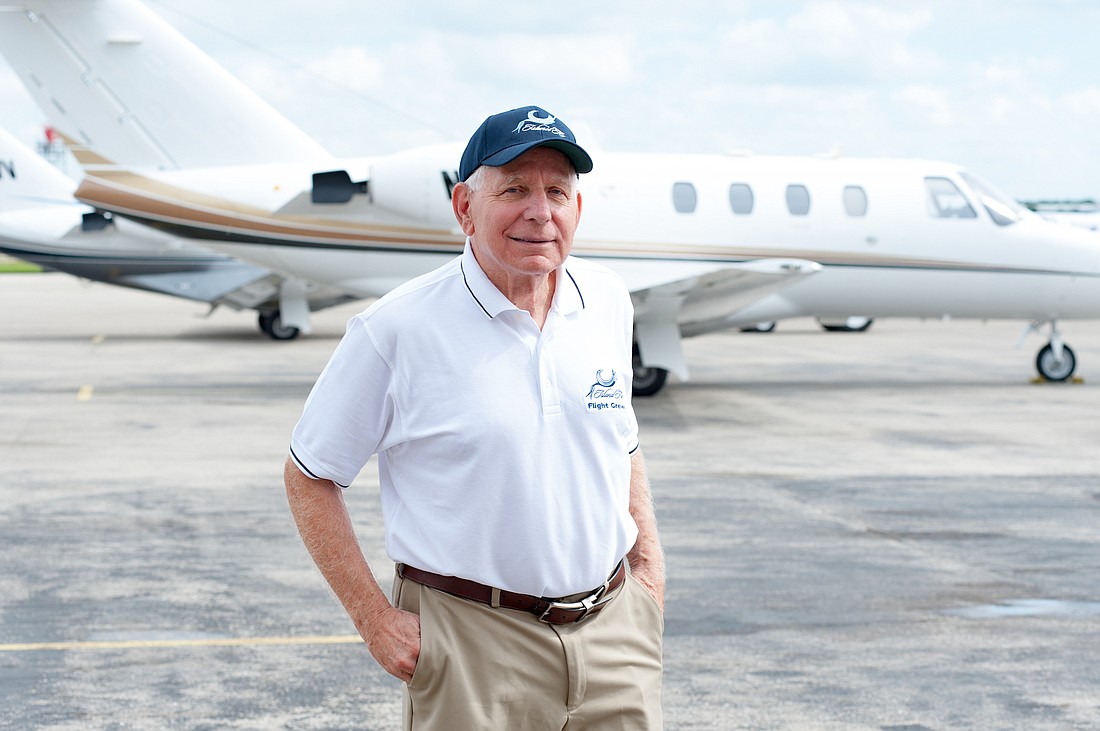- December 25, 2024
-
-
Loading

Loading

Bigger isn’t better. At least that’s what one small airline is arguing, one flight at a time.
The entrepreneur behind that airline, Sanford Rederer, has been involved in commercial aviation for about 40 years. He’s worked with large aircraft at big airlines, among them Continental Airlines, TWA and American Airlines. “It was all airline planning and finance — figuring out where to fly, what type of aircraft to use, how many flights, pricing strategy, marketing strategy and then some aircraft finance,” he says.
Today, Rederer continues to consult for airports and airlines. He’s working with Seattle-Tacoma International Airport for example, helping airport officials in its talks with international airlines about flights to Seattle.
But other than that, Rederer, a Sarasota resident, is dedicating his energies to Island Air Charters — a Fort Lauderdale-based airline he purchased in late September. He’s hitting the tarmac running with his wide-ranging plans for growth, from increasing the number of planes to marketing through hotels.“I like the airline because it was well run and the principal people working there seemed to be both congenial and competent,” he says.
Island Air operates in a niche of particular interest to Rederer. It’s one he says includes about eight airlines, each with aircraft that carry nine passengers or less traveling to smaller Bahamian cities from Southeast Florida. The aircraft largely travel through facilities more convenient for passengers, he says. Instead of going through a Transportation Security Administration screening, passengers are screened by airline personnel.
Island Air flies to Bimini and other islands in the Bahamas from Fort Lauderdale Executive Airport. The airline flies pleasure passengers and handles some specialized travel. “If a cruise ship has a problem and they need to get a crew of mechanics out there right away and they need to take their tools with them, it’s not so easy to get on JetBlue and do it,” he says.
“We want to be the carrier of choice for Bimini in particular because our aircraft is optimized for that market.” — Sanford Rederer, owner, Island Air Charters
The company was founded in 1986. Rederer purchased it from Linda House, who ran Island Air for 11 years.
The 14-employee company generates about $100,000 in revenue a month, with seasonal ups and downs, Rederer says. He declines to disclose what he paid for the air service.
Rederer's plans for growth include buying more aircraft. Island Air has two types of planes — three Britten-Norman Islanders and one Piper Navajo Chieftain. All four are twin-engine, nine-passenger planes. Buying another aircraft will cost about $250,000 to $350,000, he says. “It’s big, but it’s not insurmountable,” he says of the expense.
Expansion efforts also call for flying out of more locations, including possibly adding flights from Opa-Locka to Bimini. “When we get additional aircraft," he says, "we’ll be able to look at more markets of that ilk.”
On the marketing side, Rederer wants to partner with hotels and resorts on deals for travelers — a tactic bigger airlines deploy. “If we can offer a package with a hotel night or two nights, then the hotel is better off and we’re better off,” he says.
He also wants to ramp up social media marketing and search engine optimization so more people know about Island Air.
“We’re trying to get modernized and be a little more aggressive with pricing to attract attention,” he says. The pricing strategy could involve lowering ticket prices for trips to Bimini or Cat Cay from the average price of about $210 with tax one-way to about $190. He’s also offering special fares during certain times of the year that bring the price down even lower. One example: the airline has $139 one-way tickets to Bimini and $169 one-way tickets to Cat Cay through Nov. 15. “Just because we want to make a little splash and get people accustomed to Island Air,” Rederer says.
Regular customers make up about 40% of Island Air’s business. “We’re out there scrambling to get the rest,” he says. “We want to be the carrier of choice for Bimini in particular because our aircraft is optimized for that market.”
Challenges ahead include competition from other smaller airlines with three to six aircraft and another issue many businesses face — finding good people. “We really like the pilots we have and the mechanics,” Rederer says, “but when we get the next aircraft, we’ll need another pilot, and it’s not so easy to find good pilots.”
Rederer hopes to have a new plane by the end of the year. After that, he says the plan is to keep on flying: “I’d like to digest that, see how our marketing programs are doing, then consider getting another aircraft.”